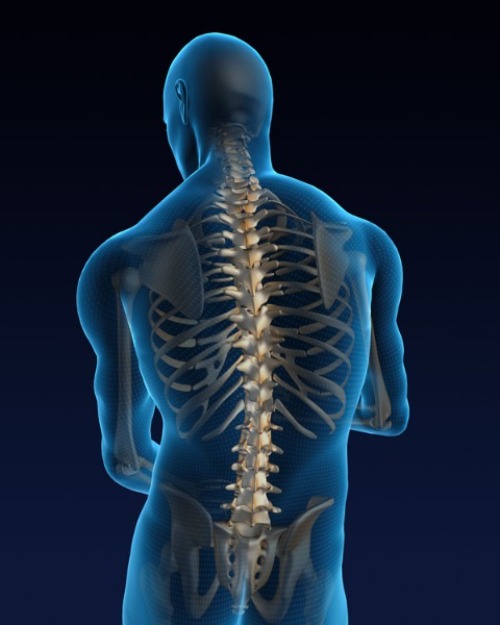Oct. 6, 2023 Research Highlight Biology Medicine / Disease
New genes implicated in an incurable spinal disease
An expanded genomic association study reveals previously unknown genetic links to a debilitating spinal disease
The discovery of eight new genes associated with a disease known as ossification of the posterior longitudinal ligament of the spine (OPLL) is a key step toward the development of effective treatments for this currently incurable disease1.
OPLL is a painful and debilitating condition in which the ligament that travels ventral to the spinal cord ossifies over time, severely restricting movement and causing motor and sensory issues, pain and numbness.
“OPLL is more common in East Asian populations than in Western populations, and is particularly prevalent in Japanese people,” notes Shiro Ikegawa of the RIKEN Center for Integrative Medical Sciences. “This points to a genetic susceptibility to the condition, hence our investigations into the causal genes involved.”
Previous research has suggested links between certain health traits, such as type 2 diabetes and a high body mass index (BMI), and the development of OPLL. However, OPLL is likely a ‘polygenic’ disease, meaning that complex genetic and environmental factors combine to drive its progression.
Ikegawa and his co-workers conducted an initial genome-wide association study (GWAS) of OPLL in Japanese patients in 2014, and identified six significant genetic loci linked to the disease2. More recently, they discovered a susceptibility gene, CCDC91, in one of the loci3.

Figure 1: Genetic studies reveal new gene candidates that might be responsible for the debilitating and incurable disease known as ossification of the posterior longitudinal ligament of the spine (OPLL). © comotion_design/E+/Getty
Now, the team has expanded on this earlier study2 by conducting a meta-analysis of GWASs comprising data from 22,000 Japanese individuals. This revealed a further eight previously unreported genetic loci and specific candidate genes that warrant future study.
The team observed enrichment in genes related to connective tissue and bone cell groups, as well as blood and immune cell components. Analysis of 96 different traits showed that OPLL also has positive correlations with type 2 diabetes and increased BMI.
“We found a significant causal effect of increased BMI and high bone mineral density on OPLL. These insights could point towards novel treatment targets,” says Ikegawa.
“Crucially, although our data confirms a link, we didn’t find causal effects of type 2 diabetes on OPLL development,” adds Ikegawa’s colleague Chikashi Terao.
The team also found genetic differences between cervical (neck) and thoracic (trunk) variants of OPLL, with a stronger influence of BMI fueling the latter. These differences between subtypes may inform the basis for precision medicine for OPLL—the two related conditions require different treatments and care, notes Ikegawa.
The researchers are planning to further examine the candidate genes they have uncovered, and will conduct additional GWASs using data from Korea, Taiwan and China to gain insights into OPLL in different ethnicities.
Related contents
Rate this article
References
- 1. Koike, Y., Takahata, M., Nakajima, M., Otomo, N., Suetsugu, H., Liu, X., Endo, T., Imagama, S., Kobayashi, K., Kaito, T. et al. Genetic insights into ossification of the posterior longitudinal ligament of the spine. eLife 12, e86514 (2023). doi: 10.7554/eLife.86514
- 2. Nakajima, M., Takahashi, A., Tsuji, T., Karasugi, T., Baba, H., Uchida, K., Kawabata, S., Okawa, A., Shindo, S., Takeuchi, K. et al. A genome-wide association study identifies susceptibility loci for ossification of the posterior longitudinal ligament of the spine. Nature Genetics 46, 1012–1016 (2014). doi: 10.1038/ng.3045
- 3. Nakajima, M., Koido, M., Guo, L., Terao, C. & Ikegawa, S. A novel CCDC91 isoform associated with ossification of the posterior longitudinal ligament of the spine works as a non-coding RNA to regulate osteogenic genes. American Journal of Human Genetics 110, 638–647 (2023). doi: 10.1016/j.ajhg.2023.03.004
